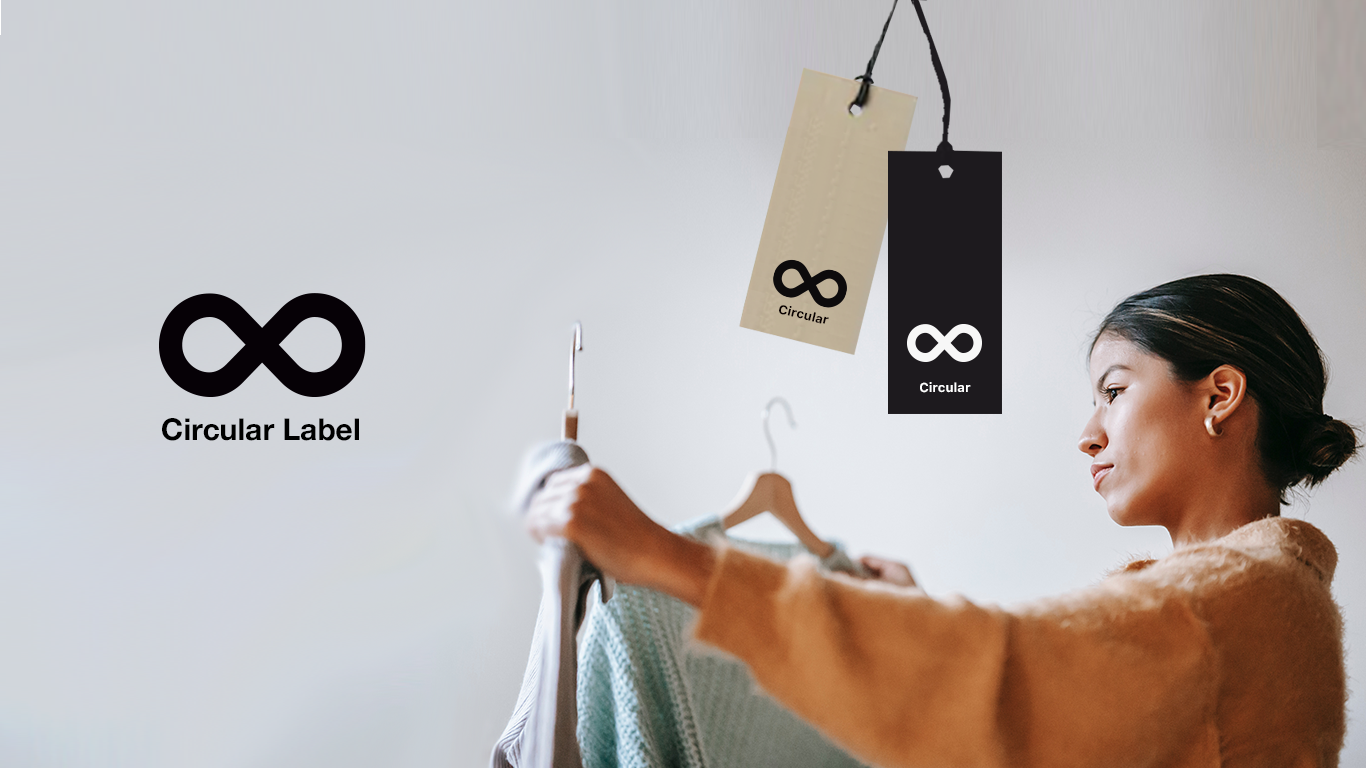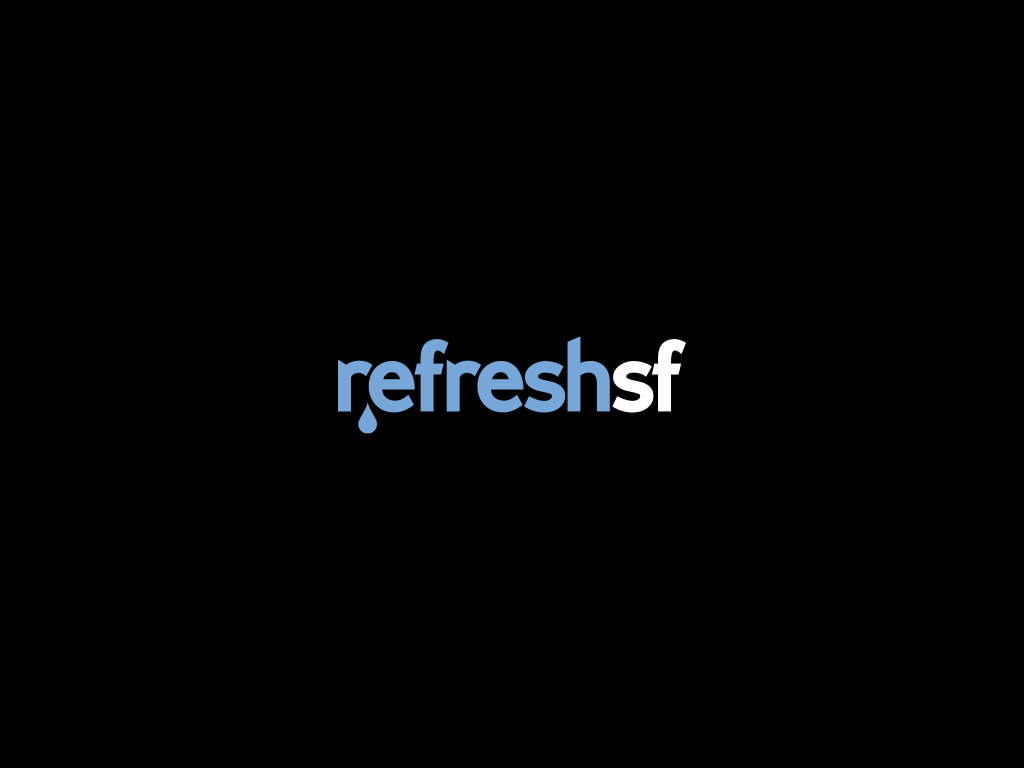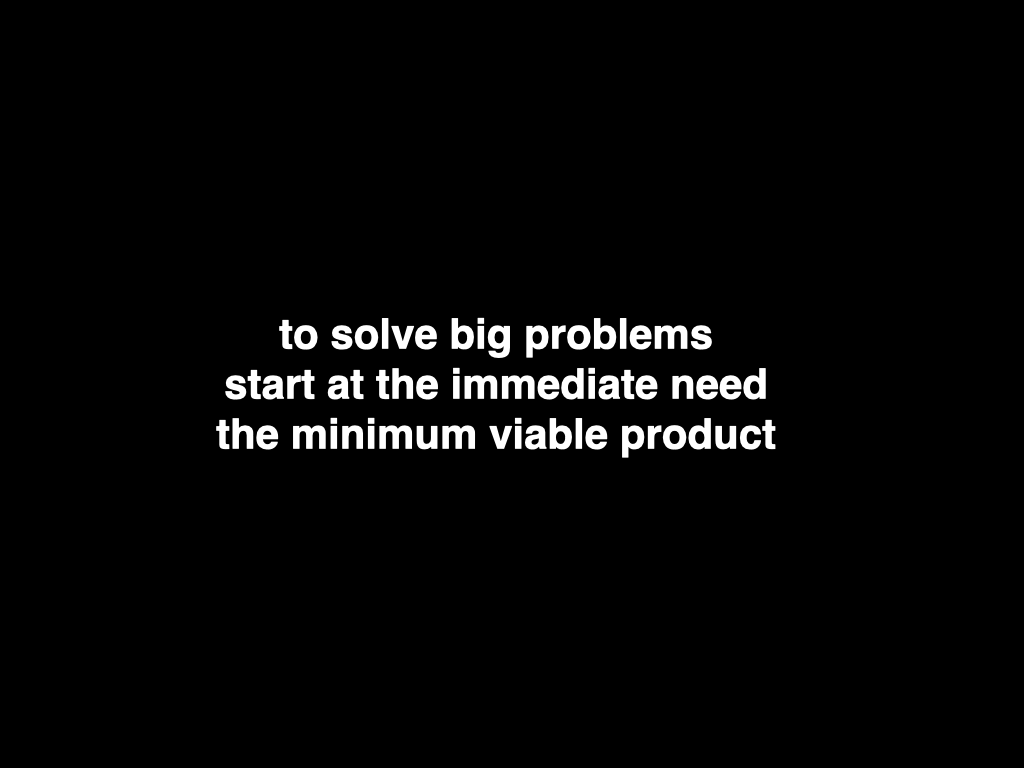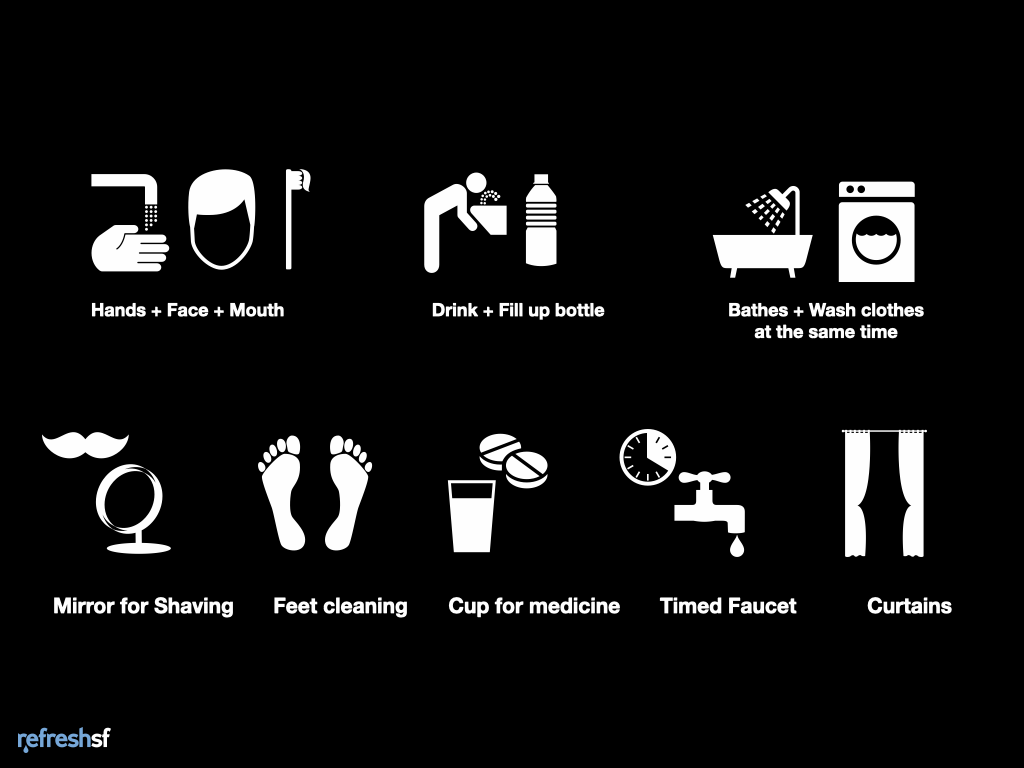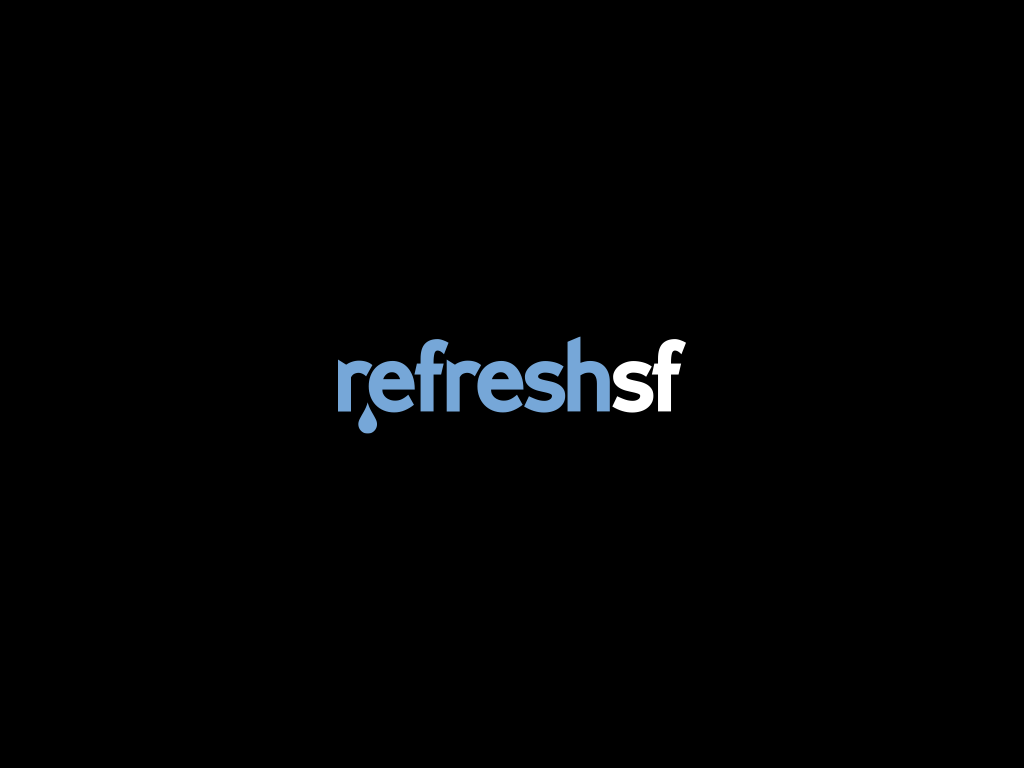Happiness Project at CCA
A crowd-sourced series of urban interventions that activate and humanize public spaces
The project was made by the IxD 4 Experience Design students in the interaction design program at CCA.
We worked collaboratively to build a meaningful and engaging experience.
The Happiness Project at CCA is part of a crowd-sourced series of urban interventions that activate and humanize public spaces and make the everyday extraordinary and uplifting.
https://happinessprojectsf.org/
Related Projects
Circular Fashion Label
Create market demand for renewed textiles
Branding to create a market for reclaimed fabrics
Abstract
This project proposal is the creation of a visual labeling system, brand, and marketing strategy aimed at creating demand and desire for products made from reclaimed material that would otherwise be destined for landfills. Innovate with the materials we already have.
I. Introduction
This project proposal is the creation of a visual labeling system, brand, and marketing strategy aimed at creating demand and desire for products made from reclaimed fabrics and materials that would otherwise be destined for landfills. The purpose of this consumer-aimed campaign is to complement and enhance efforts being made by government and industry best practices to expedite these important supply chain and production changes. This project began as an exploration into how to deal with the massive amount of fabric waste caused by the fashion industry and will be primarily focused on this industry, but the concept of consumer labeling for recycled, renewed and used products can potentially extend to other consumer products.
II. The Problem
A. Significance of the problem In the United states 292.4 million tons of waste end up at municipal waste dumps. Although 94 million tons of this waste gets recycled or composted the majority of it ends up buried in landfills. The reasons people discard clothing varies, the item could be out of style, a poor fit for the individual, or simply worn out. Consumer products and the fashion industry thrive on temporality and have marketing and advertising specifically designed to shift consumers' tastes from season-to-season and year to year. The industry is driven by seasons and creates a desire for the newest colors, styles, and fits.
Today’s manufacturing process begins with raw natural materials being extracted from one part of the world, synthetic materials made in other parts of the world and then shipped mostly through cargo ships around the world where they are turned into bolts of fabric, sheets of metal, and parts and then shipped to manufacturers often, yet again, across the world, to wherever the lowest-paid labor can be found and made into articles of clothing, and hard goods that are shipped yet again to countries all over the world where they are sold at retail locations. Some items are bought but lots of products end up at discount retailers or get made into bundles and shipped, yet again across the world to be sold by the pound for scrap. Eventually, the products are either worn out or never get used and end up in landfills, burned, or sadly, end up in waterways.
Today raw materials like natural or synthetic fibers are made, they are turned into bolts of fabric, shipped to apparel makers often across the world, made into articles of clothing that are shipped yet again to countries all over the world where they are sold at retail locations. Some clothes are bought but lots of clothing ends up at discount retailers or getting made into bundles and shipped, yet again across the world to be sold by the pound. Eventually, the clothing is either worn out or never gets used and ends up in landfill, burned or sadly, as I mentioned before, ends up in waterways.
Because most fashion is seasonal and driven by low margins, Retailers depend on finding the lowest cost for labor, often in countries with lax environmental policies in order to produce clothing at a cost that carries a margin high enough to make a profit, yet low enough to appeal to consumer demand for the latest styles at an accessible price. raw materials like natural or synthetic fibers are made, they are turned into bolts of fabric, shipped to apparel makers often across the world, and made into articles of clothing that are shipped yet again to countries all over the world where they are sold at retail locations.
1. Overproduction and the high cost of cheap clothes
One of the fashion industry’s problems are with deadstock. Deadstock refers to the clothing and fabric that isn’t sold. It’s never been used. Deadstock makes up 30%of the 150 Billion garments created each year. Some of this gets donated but most of these items go straight into landfills. It’s easy to address deadstock, by simply not overproducing it in the first place. But because of the way clothing is produced, the actual costs are not factored into how we think about production. The 2019 fashion industry global market value is a staggering 406 billion dollar business. (Fashion United, n.d.) and a labor force of 3,384.1 million worldwide. A garment worker in India is paid an average of Rs. 10,000 to 12,000 (US$ 133 to 160 per month), (Society for Labor and Development, 2021, #3) while in China, a garment worker gets “1120 RMB (US$161) and 2480 RMB (US$357) per month, falling far short of the estimated living wage of 5410 RMB (US$778) per month.” (Business & Human Rights Resource Centre, n.d.), in Bangladesh, a worker can expect 8000 Taka(US$94) per month. (Kuenneke, 2020)compared to the median wage of US garment workers who are paid $14.31 per hour or $2290 per month. (U.S Bureau of Labor Statistics, 2022)
Clothing manufacturing tends to move around to wherever the cheapest labor markets are. Wherever workers are abundant and willing to work for extremely low pay is where the manufacturing tends to shift. Working conditions, safety, and environmental impact are not a factor of consideration.
Today's fashion industry, particularly “fast-fashion” is a term defined as: “Clothing designs that move quickly from the catwalk to stores to meet new trends. The collections are often based on designs presented at Fashion Week events. Fast fashion allows mainstream consumers to purchase trendy clothing at an affordable price.” (Hayes, 2020) Retailers depend on exploiting cheap labor, often in countries with lax environmental policies in order to produce clothing at a cost that carries a margin high enough to make a profit, and low enough to appeal to consumer demand for the latest styles at an accessible price. Consumer tastes are shifting however, consumers are losing their appetite for fast fashion as evidenced by the bankruptcy of fast-fashion retailers like Forever 21. This trend in consumer distaste towards clothing derived from sweatshop labor could be seen as far back as 2004 as evidenced by the following survey results. “The Marymount surveys were conducted in 1995, 1996, and 1999. In each survey, three of four consumers said they would avoid shopping in a store if they knew the goods were produced under bad conditions, while not quite two of three say they would be more inclined to shop in stores combating sweatshops. The greater response to knowledge about bad conditions than good conditions suggests that consumers respond more to information that reduces their utility than to information that increases it— consistent with Kahneman and Tversky’s (1979) prospect theory that shows people weigh potential losses more heavily than potential gains. An average of 85 percent of respondents in the Marymount survey said they would pay $1 more for a $20 item if they could be assured that it was made under good conditions.” (Freeman & Ellliott, 2004, 4)Avoiding exploitive labor practices by shifting to local-based, domestic production that conforms to fair labor practices will increase the cost of individual clothing items but will decrease the unquantifiable, but very real costs of harm to the environment and local economies.
2. Product end of life
The amount of clothing that gets discarded and donated is staggering. The U.S. sends about 21 billion pounds of textile waste to landfills every year. The item that gets donated will be put into bins, sorted extremely quickly with a fast inspection looking for tears, stains, and seasonality, and only the items that are most likely to sell are tagged and sent out to be sold in thrift stores. High-value fabrics like cotton, denim, wool, linen, and leather are bundled to be sold in lots, Items that are torn, stained, missing buttons, or visibly worn out are thrown into trash bins, and items that are out of style, or not popular in the local market but are otherwise usable, get made into bundles that are sold by the ton and shipped to other continents, to countries like Ghana and Indonesia that have thriving used clothing markets. Once in these places, unwanted clothing eventually is burned, buried, or ends up in waterways. Of the clothing donated to charities, only 10-15% of it actually ends up in the secondhand market. (McCarthy, 2018). Clothing is sorted and this waste has a negative impact that is long-lasting. Fabrics, particularly synthetic fibers like nylon and polyester blends can take up to 200 years to break down and while they do, they emit toxic greenhouse gases that exacerbate our climate crisis. (McCarthy, 2018)
This is where circular fashion comes in. Circular fashion, related to the term circular design, is an emerging industry term for apparel that is designed from the beginning with the goal of making the end of life of the product as safe for our planet as possible.
A. Innovations
I started with desk research and speaking with fashion industry professionals to get a better understanding of the terms and way they look at the category of discarded clothing. I found that there are three types of clothing that could fit in the circular fashion category.
There are countless initiatives and innovations focused on solving the problems of over-production and end of life for fabrics. There are three that have direct relevance to the ability of circular systems to succeed.
1. Upcycling
Upcycling means converting a material into something of greater value than it originally was. Upcycling refers to reusing an object in a new way without degrading the material it is made from, as opposed to recycling which generally involves breaking down the original material and making it into something else, using more energy in the process. People have been upcycling for centuries, using old packaging and clothing in new ways, although more out of need than for the environment.
Supporters of the environmentally friendly practice of upcycling say people in developing countries have effectively been upcycling for years, using old packaging and clothing in new ways, although more out of need than for the environment. but upcycling is now taking off in other countries, reflecting an increased interest in eco-friendly products, particularly ones that are priced at an affordable level and proving profitable for the manufacturers. (Goldsmith, 2009)
Upcycling fabric to create new fashion is not new. If one visits Etsy, one will see 362,010 results for “upcycled” products. These are mostly small boutiques using unique one-of-a-kind pieces.
2. On-demand production
Made to measure, custom clothing is an old practice that is making a comeback with some retailers. EShakti, an online retailer based in India, creates made-to-order clothing based on simple patterns. The hope for this practice in the future could be reclaimed fabric that is produced on-demand in local, worker-owned cooperatives.
3. Reprocessing - reclaimed by manufacturer
Deadstock and used clothing can be reclaimed but it’s critical that they are sorted properly to enable them to either be reprocessed or reused. One of the pain points for this is sorting. Discarded clothing can be sorted much like donated clothing is today. When an article is donated to the processing center, speed is of utmost importance, and a quick inspection of each piece is given. Torn, stained or dirty items go to a discard bin and usable items are priced and hung up for sale, or sorted into bins based on their condition. The most valuable items are designer or name brands, in-season fashions, and anything with identifiable natural fabrics like wool and cotton, as well as higher quality poly blends.
It can be almost impossible to detect what type of fabric content is in any article of clothing by looking at it or even touching it. Sorters can typically identify most of these but some of the polys are harder to identify. Polyester is a problem because depending on the make-up of the blend, discarding the item means it will not biodegrade nor can it be burned without emitting toxic fumes.
It can be very difficult to tell the difference between natural and synthetic fabric content, and currently, the only way to tell is to examine the fiber through a a microscope which is time-intensive and impractical. However, research and experimental projects employ computer vision, machine learning, and microscopy to identify cells (Deep Learning on Microscopy Imaging Detecting Good, Bad and Ugly Cells with Deep Learning, 2019). Microscopic photography in combination with computer vision and machine learning is one of the promising possibilities for reclaiming and recycling textile fabrics at the production and manufacturing scale. Experimental research on the technical feasibility of using micro-geometry and surface reflection (Kampouris et al., n.d., 3) has been explored at the Department of Computing, Imperial College London with promising results and thus, with more robust sample sets and crowdsourced fabric samples that can be used to create libraries, it will soon be possible to overcome the biggest obstacles to solving the problem of processing reclaimed materials at scale.
But detecting the fabric content is theoretically possible using microphotography and machine learning. The example above shows the difference between cotton and polyester under a microscope. This technology is in its early research and development phase but is theoretically possible to do today. During the past year, I worked with a company that is using this technology to identify material content and defects in materials like clay, cement, and plastic. By using this same technology and training Convolutional neural networks (CNNs)—A type of neural network designed for interpreting visual data. one can distinguish and disambiguate the fabric content. No one is doing this today as the cost for the equipment is prohibitively expensive at this time, but costs for this equipment are becoming more and more attainable each year as the need increases. An experimental technology is of no use if there is no market demand or regulatory pressure for it, which is why focusing on creating consumer demand with a campaign centered around recognizing brands that adhere to emerging policy standards is important to expedite the changes needed.
Brand Design
This is where circular fashion comes in Circular fashion is an emerging industry term to for apparel that is designed, sourced, produced, and provided with the intention to be used and circulate responsibly and effectively in society for as long as possible in their most valuable form, and hereafter return safely to the biosphere when no longer of human use. Basically, designed from the beginning with a goal of making the end of life of the product as safe for our planet as possible.
The Circular Fashion Identity System
An item can be considered “Circular” if it complies with the upcoming Ecodesign for Sustainable Products Regulations. This means the item will be made of a to-be-determined percentage of content made of recycled fibers, free of hazardous substances, and produced with respect for social rights and the environment. This will likely mean the clothing will be composed of long-lasting fabrics that eventually are able to decompose with low off-gas emissions. In order to gain higher adoption for this program, the Circular fashion identity system also seeks to promote the practice of upcycling and purchasing used clothing as it conforms with the ecological goal of diverting the materials we already have from landfills, burning, and waterways.
Logo in English and Spanish, French, Simplified Chinese, German, Hindi, and Japanese
The typeface is Poppins and is available on Google Fonts. The font was chosen for its weight and legibility and the ease with which fonts from different language characters can be applied to it for localization.
NOTE: in some languages “Circular” has been changed to “reusable”
Since Circular is not a brand itself, this creates challenges in how to express the value proposition by enhancing but not overshadowing the brand. Since circular can stand for new clothes or used fabric, copy and language are particularly important. For new clothing stressing the way an item is made, and being clear about the product being made to last beyond the initial buyer is important.
This global pandemic has inadvertently been a chance to do things differently; to experiment with new ways of thinking and prioritizing. It is also a time for reflecting on what past behaviors are no longer working.
We need to use the things we already have in a more sustainable way, for ourselves and our future generations.
Bibliography
Fashion and Sustainability Design for Change.by Lynda Grose
Cradle to Cradle. Farrar, Straus and Giroux.
Naked Fashion: The New Sustainable Fashion. New Internationalist.
Articles
Federal Energy Efficiency Programs. The American Council for an Energy-Efficient Economy (ACEEE) Fact Sheet. aceee.org/portal/national-policy
European Commission. (2020, April). Products and the Circular Economy. Policy recommendations are derived from Research & innovation projects. https://cfsd.org.uk/wp-content/uploads/2020/05/Products-and-Circular-Ecomony-April-2020.pdf
Fashion United. (n.d.). Global Fashion Industry Statistics
https://fashionunited.com/global-fashion-industry-statistics/
.Goldsmith, B. (2009, September 30). Trash or treasure? Upcycling becomes a growing green trend. Reuters. https://www.reuters.com/article/smallBusinessNews/idUSTRE58T3HX20090930
Hayes, A. (2020, April 10). Fast Fashion. Investopedia. https://www.investopedia.com/terms/f/fast-fashion.asp#:~:text=Fast%20fashion%20is%20the%20term,clothing%20at%20an%20affordable%20price.
McCarthy, A. (2018). Are Our Clothes Doomed for the Landfill
https://remake.world/stories/news/are-our-clothes-doomed-for-the-landfill/
Turner, M. (2010). Is LEED a True Leader? Claremont College Department of Environmental Policy.
Braungart, M., & William McDonough, W. (2002). Cradle to Cradle. Farrar, Straus and Giroux.
Brooks, M. (2012, March 12). Identifying Fibres and Fabrics. Dress and Textiles Specialists and Victoria Albert Museum. https://www.dressandtextilespecialists.org.uk/wp-content/uploads/2015/04/Fibres-Fabrics.pdf
Centro Corporativo de Mondragon. (n.d.). Mondragon. https://www.mondragon-corporation.com/en/about-us/
Creemers, R. (May 9, 2018). China’s Social Credit System: An evolving Practice of Control. Leiden University, Van Vollenhoven Institute.
Deep Learning on Microscopy Imaging Detecting Good, Bad and Ugly Cells with Deep Learning. (2019, July 7). Toward data Science. https://towardsdatascience.com/deep-learning-on-microscopy-imaging-865b521ec47c
European Commission. (2020, April). Products and the Circular Economy. Policy recommendations are derived from Research & innovation projects. https://cfsd.org.uk/wp-content/uploads/2020/05/Products-and-Circular-Ecomony-April-2020.pdf
Fashion United. (n.d.). Global Fashion Industry Statistics. https://fashionunited.com/global-fashion-industry-statistics/
Fletcher, K. (2012). Fashion and Sustainability Design for Change. Laurence King Publishing.
Freeman, R. B., & Ellliott, K. (2004, December). White Hats or Don Quixotes? Human Rights Vigilantes in the Global Economy. National Bureau of Economic Research, Emerging Labor Market Institutions for the Twenty-First Century. https://www.nber.org/system/files/chapters/c9950/c9950.pdf
Goldsmith, B. (2009, September 30). Trash or treasure? Upcycling becomes a growing green trend. Reuters. https://www.reuters.com/article/smallBusinessNews/idUSTRE58T3HX20090930
Hayes, A. (2020, April 10). Fast Fashion. Investopedia. https://www.investopedia.com/terms/f/fast-fashion.asp#:~:text=Fast%20fashion%20is%20the%20term,clothing%20at%20an%20affordable%20price.
Kampouris, C., Zafeiriou, S., Ghosh, A., & Malassiotis, S. (n.d.). Fine-grained material classification using micro-geometry and reflectance. Intelligent Behavior Understanding Group Newsletter.
Koetse, M. (2017, Oct 1). The Social Credit System – Part II. Asia Society. https://asiasociety.org/switzerland/social-credit-system-part-ii
McCarthy, A. (2018). Are Our Clothes Doomed for the Landfill? Remake, The clothing that ends up in landfills can sit there for 200-plus years, and as it decomposes, it emits methane—a greenhouse gas more potent than carbon. https://remake.world/stories/news/are-our-clothes-doomed-for-the-landfill/#:~:text=The%20U.S.%20alone%20sends%20about,up%20in%20the%20secondhand%20market.
Minney, S. (2012). Naked Fashion: The New Sustainable Fashion. New Internationalist.
Pickety, T. (2018). Capital in the 21st Century. Harvard University Press.
Skudlarek, R. (2017, January 17). Color-Changing Fabrics. Emerging Technologies Research Collaboratory. https://etrc.umn.edu/color-changing-fabrics
Working Party on Measurement and Analysis of the Digital Economy. (2016, June 13). Working Party on Measurement and Analysis of the Digital Economy. NEW FORMS OF WORK IN THE DIGITAL ECONOMY. http://www.oecd.org/officialdocuments/publicdisplaydocumentpdf/?cote=DSTI%2FICCP%2FIIS(2015)13%2FFINAL&docLanguage=En
What is a circular economy? (n.d.). Ellen MacArthur Foundation. Retrieved April 20,
2022, from https://ellenmacarthurfoundation.org/topics/circular-economy-introduction/oveview
EU Strategy for Sustainable and Circular Textiles. (n.d.). European Commission.
National Overview: Facts and Figures on Materials, Wastes, and Recycling | US EPA. (2021, July 14). US Environmental Protection Agency. Retrieved April 24, 2022, from https://www.epa.gov/facts-and-figures-about-materials-waste-and-recycling/nnational-overview-facts-and-figures-materials
Related Projects
CalAlert
Envisioning a universal Emergency Alert System for the State of California
CalAlert
CalAlert is a consolidated emergency alert and response system. This system allows residents and visitors to California to view information from multiple verified state and federal agencies and local, crowdsourced information. This system allows local municipalities, police, fire, and other emergency response organizations to push information with little to no overhead.
The climate crisis is the existential threat we will all face in the upcoming decades. In 2020 alone over 4 million acres burned in California. Fires, hurricanes, and floods are only going to get worse, so we must build accessible platforms and communications infrastructure to warn people of danger.
Sign up flow
Designed to gather helpful information to local fire departments and law enforcement.
Customizable Loading screens for Local agencies
Agencies can use custom images or choose from a palette of colors to create a branded visual design.
Related projects
Llama Foods
Llama Foods brings quality foods to food deserts, sustainably and equitably. This project is an exploration of what we could do with a few trucks and food donations.
Llama Foods brings affordable, quality food to food deserts and employ people from these communities with fair wages.
The 2020 pandemic amplified the inequity that has always been present in our country.
“Members of minority racial and ethnic groups are disproportionately represented among COVID-19–associated deaths.” *
The virus propagated in low-income communities of color—individuals who do not have the luxury of working remotely. Nutritious food is critical for breaking the cycle of chronic disease (poor food → poor health → more bills → less money → poor food). More access to more nutritious food gives these communities a fighting chance against future pandemics.
Communities where access to preventative health care and even access to food exacerbates the prevalence of pre-existing conditions such as heart disease and diabetes, which also made these communities particularly vulnerable.
The problem is staggering. 38 Million Americans live in poverty, and many live where easy access to nutritious food is impossible.
A food desert is where people have low incomes and low access to quality food. The Bay area is home to 9 of America's worst food deserts, and right here in San Francisco, we have a large part of the city that is considered a Food Desert.
Llama Foods
Bringing quality foods to food deserts sustainably and equitably.
Aynne Valencia, Amy Cheng, Audrey Graves
Happiness Project SF
The Happiness Project is a crowd-sourced, interactive installation that takes place in different locations throughout the Bay Area.
The Happiness Project is a crowd-sourced, interactive installation that takes place in different locations throughout the Bay Area.
Through a series of posters, flyers, online ads, and social media the public is asked to contribute works of art, words of encouragement and positive affirmations to make others happy. You can submit via an online form at the thehappinessprojectsf.com or by using the hashtag #thehappinessprojectsf on Instagram or twitter.
Upon submission of photos or written short messages, those who chose to give their email address will be invited to the next impromptu site-specific projection for a gathering. They will see their words or art projected on a massive screen. Submissions are screened to ensure the content fits with the mission of the project.
The Happiness project will be launching Summer of 2019 and run in select locations.
In a world filled with division, the happiness project seeks to bring others together to share simple, everyday joy and if only for a moment, make the day a little brighter and spark unexpected magic.#happinessprojectSF
Glow
Glow - Ambient home device for reminders and notifications.
glow hub
About Glow
Glow is a home assistant. Unlike Alexa or Google Home, the Glow system uses machine learning to prioritize inbound communications and infer their importance to the user. Glow features an interactive and portable light fixture that uses ambient sound and light to push and convey important information to the user while they are in the home and uses opportunistic, location-based services to push these same notifications to whatever device the user has available at any given time.
A simple way to record data or action items received in daily interactions - both conversations and digital communications
A mechanism that will deliver frequent alerts/reminders
A way to relieve anxiety by helping people remain in control of their agency
Design Principles
Low Maintenance
A user should not have to import the data that comes into the system - the data should seamlessly be imported from email, calendar invitations and text messages
Friendly
It should perform in a way that is innocuous and not obtrusive
Smart
The system should learn preferences and infer information without explicit input based on situational awareness (Location, context)
TEAM:
Aynne Valencia
Karina Bingham
Scott Drapeau
Hulin Wang
Glow Band form
Package
Curiosity
A panel I was on at the Apple Store
Curiosity and the creative mind
Talking about my narrative video and photography work
I spoke on a panel about curiosity at The Apple Store in San Francisco last month.
I decided to dissect my own creative process and the loose and abstract connections I make when I create my design or art work. I thought about how these two activities of creation are different and the ways they are the same.
Curiosity is human - I am a person who spends my days dealing with the world of computing. I love technology but a machine lacks curiosity and making strange unexpected connections is one of the most amazing characteristics of our humanity.
Curiosity is the force that drives creativity - it is the core of creativity and with it ideas, innovation, and new ways of being are possible.
Curiosity begets curiosity. One question leads to another which leads to another. And it is also contagious. Being a person who is curious about the world sparks it in others.
curio maps
Curio is a map that shows the local lore and history of selected San Francisco neighborhoods. Download the mobile application to see stories and documented histories as told by the residents, and merchants in this dynamic and changing city.
“Cities, like dreams, are made of desires and fears, even if the thread of their discourse is secret, their rules are absurd, their perspectives deceitful, and everything conceals something else.”
Italo Calvino
Curio Maps on display
Living in the city means negotiating space with other people and constantly maneuvering our way as we try to get to one destination to another. We strive for convenience, expediency. Serendipity, curiosity and chance is harder to find in a dynamic, transient city.
How might we open the channel to things we would not have ordinarily seen? How can we invite the intangible energy, the spirit, the secrets each block holds that can take us on a journey that transcends us from our daily routine?
What’s curio map?
Open the channel to things you would not have ordinarily seen. See the secrets each block holds and go on a journey through history.
Curio is a map that shows local lore and history of selected San Francisco neighborhoods. Download the mobile application to see stories and documented histories as told by the residents, and merchants in this dynamic and changing city.
Coming soon:
North Beach & The Broadway Corridor 1970s Punk Scene
Curio - Hayes Valley
Little Bohemia along Hayes Creek
The current map covers the territory between Van Ness street to Market Street to Webster to McAllister Street.
History of Hayes Valley
This land was home to the Ohlone Tribe until 1776. Hayes Valley transformed from a sleepy farm community of the 1840s to a bustling commerce area up until the 1910s. Structures in hayes valley survived the fires that followed the 1906 Earthquake and serve as one of San Francisco’s best examples of early Victorian architecture.
The 1920s-1930s were a prosperous time in this neighborhood with single family homes and a thriving African American community.
The construction of the Central Freeway cut through this neighborhood and Urban redevelopment of the late 1940s 1970s decimated the community. The earthquake of 1989 and damage of the freeway offered a chance for renewal.
information about the map
Map center
RefreshSF
RefreshSF, SoCap Creative Currency winner
RefreshSF was a project aimed at helping people access fresh water, a critical need for homeless people. This project sought to reopen the City of San Francisco public restrooms and get funding to open public stations for bathing, washing clothes, laundry, etc. The idea is to use unused or underused urban spaces. This project used crowdsourcing with a public awareness campaign and a mobile system for citizens to donate small amounts of money to the project.
Our team did three pilots of our idea in San Francisco, setting up temporary wash basins with a water hose to attract attention and get feedback. .The feedback was positive, we discovered that many people who used the service were not homeless, and the general public would find the service proposed to be desirable, and they would use it as well. We also found department stores, the Ferry Building, hotels, and local churches willing to support the program.
This project won the Creative Currency hackathon and was presented at the Social Capital Markets Conference.






